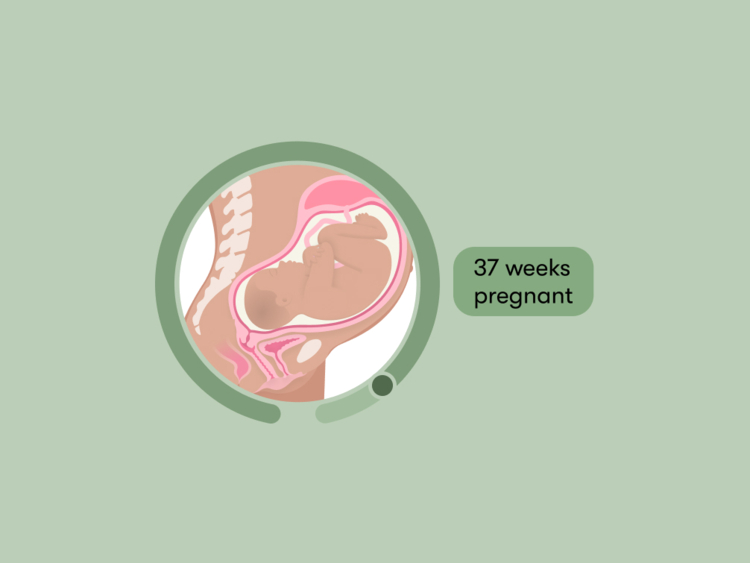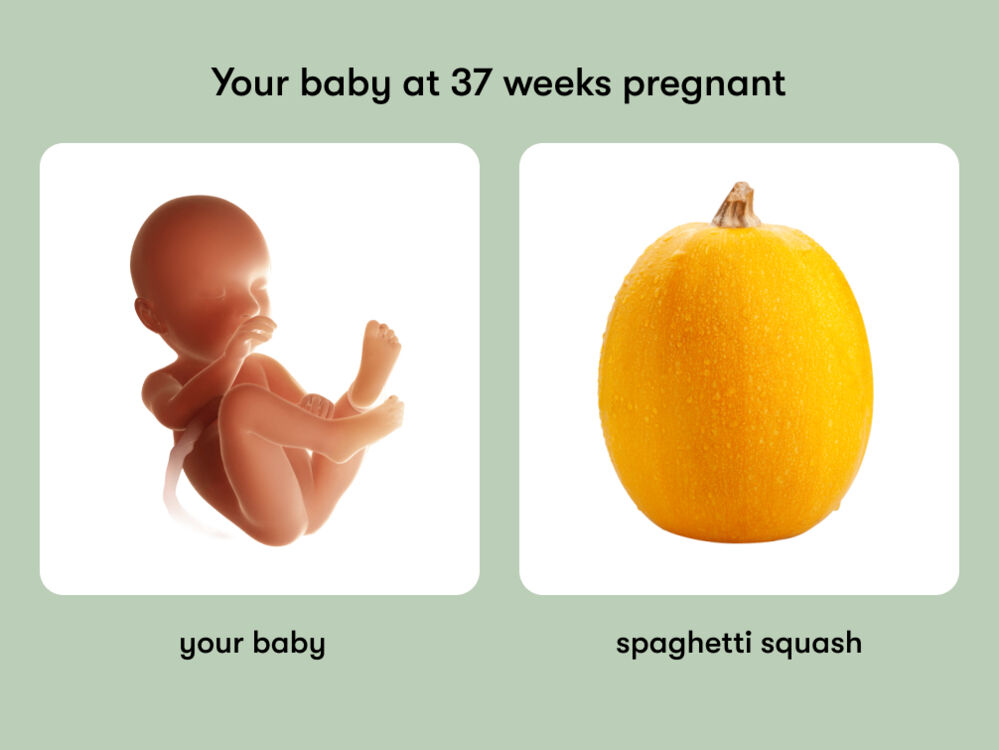There’s no doubt that being 37 weeks pregnant is a special time, with your baby’s arrival likely to be just around the corner. It’s natural to feel anxious as well as excited this week, with lots of things to think about and prepare for ahead of your due date.
Our guide on labor and delivery tips can help you feel ready for what’s coming next. But to help you feel aware of everything happening this week, we’ve gathered the key information below, including advice from a Flo expert.
Your baby at 37 weeks pregnant
Almost ready to be born
At 37 weeks, your baby has reached early term. They’re just two weeks away from being full term, which starts at 39 weeks — so soon! Forty weeks marks their due date, but one study found only 5% of babies are actually born on this day.
Practicing smiling
Adorably, this week, your 37-week-old baby is practicing smiling. Right now, their smiles are random and not linked to their emotions. But by the time they’re two months old, they’ll be able to smile (and frown!) on purpose.
How big is a baby at 37 weeks?
Length (crown to heel): 48 cm or 19 in
Weight: 3 kg or 6.7 lb
Size: Equivalent to a spaghetti squash
All measurements are approximate and vary within the normal range.



